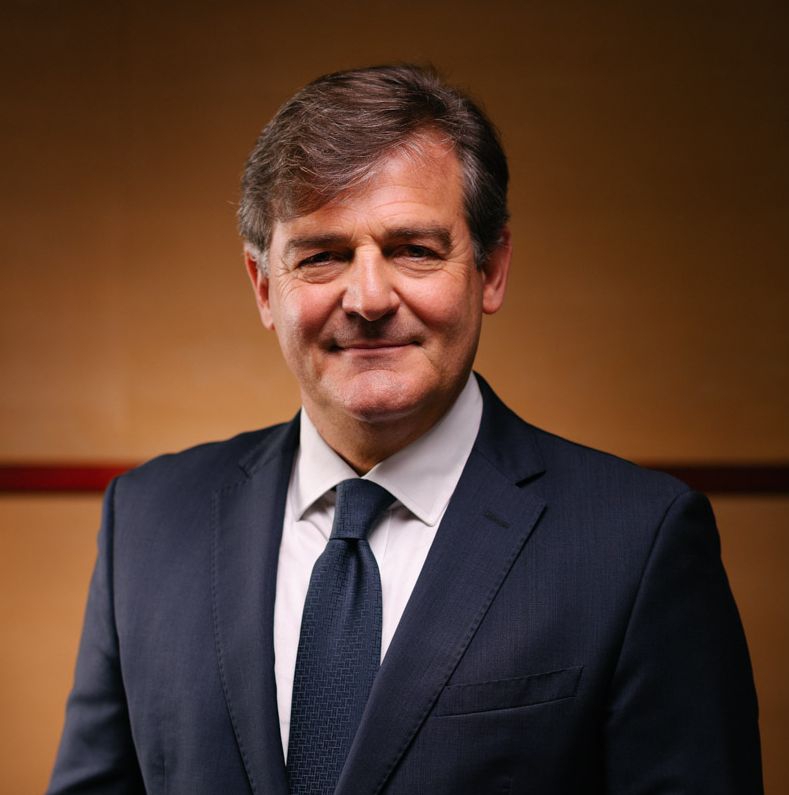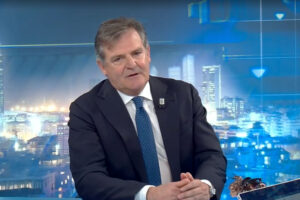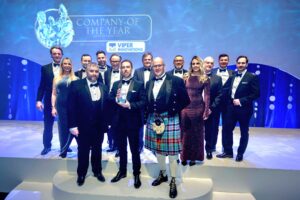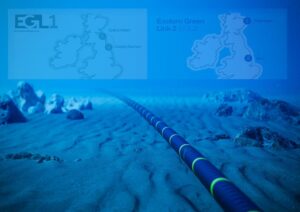As the offshore industry develops in Poland, more and more of the world’s leading companies in the sector appear on our market. One of them is the Italian Next Geosolutions, which already participates in the Baltic Pipe project, but wants to anchor in the Baltic for longer. NextGeo’s CEO Giovanni Ranieri tells us about their plans for our market and experience to date.
Let’s start from the very beginning. Next Geosolutions was established relatively recently, but as part of the Marnavi Group you have a lot of background and experience. What does the company do and how has it managed to develop it in a few years so that it is now an important player in its field in Europe?
Next Geosolutions (NextGeo) originated from the idea of a close-knit experienced management team and the forward-looking vision of the Marnavi Group, which is the largest and fastest growing Italian ship-owner operating globally in the offshore industry.
In late 2014, NextGeo fully acquired OCEANIX Srl, a fast-growing Italian marine survey contractor, and in 2017 the British company RMS Submarine Ltd, a successful provider of marine resource solutions to the energy sector, thus enhancing the group growth, footprint and capabilities. Both companies were subsequently renamed respectively as Next Geosolutions Europe Spa, based in Napoli, Italy, and Next Geosolutions UKCS Ltd, based in Norwich, UK.
NextGeo has since become one of the fastest growing international marine geoscience and offshore construction support service providers operating primarily in the energy, infrastructure, and utilities markets, and is recognised as a leading player in its field providing high quality, cost-efficient solutions covering the entire life cycle of assets and projects, from their initial conception at design stage, throughout engineering, installation, inspection and maintenance, up to decommissioning.
NextGeo combines the knowledge, expertise, and resources of teams and individuals with over 30 years of success in the marine and offshore industry with its consultancy, engineering and operational capabilities leading to true turn-key solutions.
With a fleet of 15 state-of-the-art DP class 1 and 2 vessels and a multi-national blend of around 230 skilled and experienced professionals (our biggest asset), NextGeo offers a variety of services from specialised consultancy to marine geophysical, geotechnical, environmental and archaeological surveying, and from UXO survey, removal and relocation to offshore construction support services.
How did NextGeo’s interest in the Baltic market begin?
The Baltic holds incredible market potential for offshore wind energy in Europe. Our journey in the Baltic began around four years ago; we have worked on several different projects there since then. Some of our earliest involvement was working with the likes of Prysmian and 50Hertz on wind farm projects and for the Swedish TSO Svenska Kraftnät for the submarine power cable interconnection project Hansa Powerbridge. We recognised Poland as a growth area, so we started targeting.
How was the works during Baltic Pipe project? What were Next’s tasks?
NextGeo was awarded by Saipem the pipelay survey support works in assistance to the construction works of the Baltic Pipe Offshore Gas Pipeline Project in the Baltic Sea.
The 274 km long Baltic Pipe project is a strategic infrastructure between Poland’s GAZ-SYSTEM and the Danish Energinet whose construction works were assigned, among other contractors, to Saipem – leading company for engineering, construction and installation of offshore gas pipelines.
Our role was supporting as a survey sub-contractor for Campaign 2 and Campaign 3. The scope of work included the provision of our multi-purpose subsea vessel NG Worker, and ROV and geophysical survey services to conduct UXO target inspection and identification within Campaign 2 of the project phase. This included all of the pre-lay survey and crossing surveys, basically making sure that the seabed was clear.
For Campaign 3, we provided three group-owned offshore DP2 vessels and two nearshore vessels to carry out a number of tasks on the construction support side including pre-lay survey verification of the previous results, crossing preparation, as-laid survey and touch-down monitoring.
The offshore part of the project is complete and we are now finalising the reporting which should be completed shortly.
We know that an official Next office in Poland will be opened. How do you plan to strengthen your position here?
Various development plans are already underway and NextGeo is proud to be establishing such strong working relationships with our friends in Poland.
For example, we recently met with Vice-Rector of the University of Gdańsk for Innovation and Cooperation with the Socio-Economic Environment, Prof. Krzysztof Bielawski, and his team to discuss the scientific and research activities of the university and share our experience in the maritime sector, particularly in relation to the wind industry. Each party signed a framework cooperation agreement and are looking forward to cooperating in a variety of academic, educational, and professional activities including work placements for students, joint research programmes, undergraduate experiences, conferences, and workshops.
In addition to the alliance and association we have with the university, we will also make some general enquiries to the local government officials looking at various options for NextGeo to go into Poland and establish a legal entity, and to set up an office. We already have a representative based in Poland with whom we work very closely to discover new opportunities.
In this new year, we look forward to returning to Poland for further meetings with various other parties including the Municipality of Gdańsk.
What services can you offer for the construction of wind farms in the Baltic Sea?
Our key services include: geophysical, geotechnical and environmental consultancy and engineering services; desktop and feasibility studies; offshore and onshore geophysical and geotechnical surveys; UXO surveys; visual and instrumental surveys by divers and ROVs; offshore and onshore construction support services; topography; metocean and environmental surveys; archaeology; surface and subsea asset inspection and integrity management services; 3D modelling, laser scanning and dimensional control; airborne surveys; remote sensing and monitoring services; and intervention and remedial works.
One of the important elements during the entire investment process of offshore wind farms will be the provision of a properly prepared fleet. You now have 15 ships that perform tasks in various waters. What does your fleet look like? Are there any specific vessels that can be particularly useful in the Baltic Sea?
Indeed, our fleet consists of 15 state-of-the-art DP class 1 and 2 vessels.
Our main vessels are used at different stages in the development of a wind farm. For instance, in terms of geophysics and geotechnics, we can use vessels like our Ievoli Amber, Ievoli Cobalt or Ievoli Blue. For detailed surveys, i.e. UXO surveys and/or detection and disposal, we would use the Ievoli Ivory or Ievoli Amber, or upgrade the Ievoli Cobalt with an ROV. All the vessels are specialist but are flexible in that we can scale them up or down depending on what the scope is.
Alongside the Ievoli Ivory, Amber and Cobalt, our NG Worker also has duel ROVs on board so can get involved in some construction support activities and any related seabed survey works needed. We can and have also deployed mass flow excavators from all these vessels.
Have there been any talks about your services with investors building offshore wind farms on the Polish coast?
We have spoken with stakeholders and developers but not investors at this time.
In the case of obtaining orders in the Baltic Sea, are you considering starting the recruitment of employees in Poland?
We currently have a number of really strong candidates in Poland despite there not being a specific requirement for Polish staff to win work in the Baltic Sea. That said, the offshore wind industry will create tens of thousands of jobs in Poland so it’s an exciting time to team up with the University of Gdańsk and its students who are beginning their careers. As mentioned previously, we will work very closely with the Institute where we will potentially take on some students and other experienced people that they can recommend. We will have access to new graduates and post-graduates which we can filter into the group, not just in the Polish sector but on a global basis.
One of the ships you are operating – Ievoli Cobalt – has just held a class inspection in Poland. Are you going to use the services of Polish shipyards and design offices in the future?
Yes, of course. The choice of the Gdańsk port was not only based on the well-known quality of Polish shipyards but further substantiates our commitment to invest and enhance our presence in the region. For many of our vessels, the concept and design originated in Poland, so it is a proven method for success.
You have established cooperation with the University of Gdańsk. What does it give you?
As mentioned previously, it is a mutually beneficial collaboration in sharing marine and environmental sciences and studies in the Baltic Sea. There is much we can learn from each other, and we are delighted to be cooperating with the university. I believe the many benefits of this alliance are detailed in my comments above.
Recently, more has been said about the need for a thorough examination of the seabed in the areas designated for the construction of offshore wind farms due to the fact that during and after the war there was a lot of munitions and chemical weapons dumped in the Baltic Sea, which now lie on the seabed and pose a threat to the ecosystem, and – obviously – for offshore investments. Do you have experience with this type of activity?
We have extensive experience in land and subsea detailed Unexploded Ordnance (UXO) surveys – both nearshore and offshore – carried out by means of state-of-the-art techniques and technologies.
It is extremely important to carry out such surveys to detect anomalies that can compromise safe installation works. Some UXO are detected just under the surface of the seabed whereas others may be buried much deeper so, it is vital that the correct type of survey is carried out. We conduct magnetometer and gradiometric surveys using towed arrays that can operate from very shallow to deep-water conditions.
With the support of properly licensed consultants, as and where needed according to local legislations, we are able to assist the authorities in the safe relocation and detonation of any findings.
What are your development plans? What awaits Next Geosolutions in the near future?
We have many exciting projects lined up for the next few years which you will hear about in due course. We are also looking at adding new services to complement our existing offering.
Of course, we see the Polish market as a growth area and are looking forward to establishing a legal entity in the region and building further relationships. As I said, some of our vessels were designed in Poland and as the company grows further, we believe we will not only be providing survey services but will also be looking to potentially invest in newbuild vessels and modifications to vessels as we currently do with the fleet when they are going in for their five year services.
From the perspective of a relatively new company on our maritime market – what should we wish for the maritime industry in Poland in 2022?
I believe that the presence of NextGeo in the Polish market, and more specifically in the promising Polish offshore wind market, will represent a mutual benefit for both our company, which aims to provide its contribution to such a development and to consolidate its position in the region, and the local industrial and scientific community which will take advantage of fresh new investments, mutual transfer of skills and competences, utilisation of the renowned Polish shipyard industry, employment and enhancement of local content; together, contributing to the sought-after energy transition.
In other words, I feel we should all wish good luck to each other as I see a bright future ahead for all of us.
Original Article: marinepoland.com

